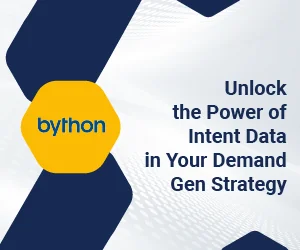If you’ve ever responded to the question, “How inclined are you to suggest a product/service/brand to friends or colleagues?” – you’ve witnessed the core fundamentals of NPS.
Fred Reichheld, the creator of the “likelihood to recommend” (NPS) metric, asserts that assessing and analyzing “likelihood to recommend” is a straightforward and productive approach to quantify consumer loyalty, as it intersects with the probability of repeat purchases and referrals. Customer satisfaction, referrals, and repeat business metrics all aid in organizational growth.
A higher Net Promoter Score means a higher chance that your business will succeed.
What is Net Promoter Score? Defining NPS
Net Promoter Score (NPS) is a metric that assigns a score to your customer experience based on the possibility that customers will recommend your company, product, or service. A whole number between -100 and +100 is the score, which signifies the level of satisfaction with the brand experience.
It can be calculated using survey software and analytics tools embedded in a customer experience management platform.
NPS is a leading indicator, predicting future events rather than capturing data on what has already happened. As we mentioned, NPS was created by Reichheld from Bain & Company in 2003. It’s used by 2 out of every 3 Fortune 1000 companies as their primary customer success strategy.
Why NPS is important
When managers and employees participate in customer experience projects, they must measure these responses to evaluate findings and improve the overall experience. Brand loyalty, an elevated degree of customer happiness, or robust reports of outstanding customer service are all signs that a customer is happy.
This information can change your business strategy, how you allocate your funds, and how you plan to create new products. This is when NPS tools are helpful, as they help you understand what your customers think about you.
How to Calculate NPS? Formula and Process
To begin with, you have to ask the core query – on a scale of 0-10, how likely are you to recommend a <<service or product or brand>> to your friends and families?
This question-delivery process can be automated using a marketing automation tool or a CXM platform.
You may use the question to change the word inside the square to your business, product, or service. You can also use different versions of this question based on your company’s operations. However, the primary objective is determining how likely someone will suggest something.
The score is next. At most, one number between 0 and 10, with 0 becoming the least likely to suggest and 10 becoming the most likely. Your NPS will be based on this 11-point scale.
You can follow this up with an open-ended query like “What is the justification for your score?” to ask people why they responded the way they did. You can change the last question as often as needed to fit your requirements.
What is the NPS formula?
Based on how they answered the NPS question, your customers can be classified into three distinct categories:
- Promoters, who scored you a 9-10
- Passives, who scored you a 7-8
- Detractors, who scored you a 0-6
Promoters are your most devoted consumers who tell their friends how great your business is. They always give you great reviews and buy from you again and again. Promoters sometimes fight for your company and explain why you’re better than your rivals.
People who are somewhat pleased with your business but have yet to be thrilled about it are called passives. If they think another brand is better, they’ll choose it instead.
Customers who are unhappy with your business are called detractors. They won’t recommend you to anyone else and may even write bad reviews about you to drive others away.
Here’s how to figure out NPS based on this:
Net Promoter Score or NPS = ((Number of promoters ÷ total number of respondents) x 100) – ((number of detractors ÷ total number of respondents) x 100)
To give you an idea, if you poll 100 customers and get 70 “promoters,” 10 “passives,” and 20 “detractors,” your NPS is 70% – 20% = 50.
What is a good NPS for your company?
The Net Promoter Score for you can be between -100 and +100. The aim is to rack up as many points as possible without manipulating the surveys. But what does a high score mean?
When the NPS is below 0, it’s usually a bad sign. This means that more people are against you than people for you. For safety, an NPS number above 0 is fine, but you can’t say for sure if it’s acceptable, excellent, or might have been better.
The definition of a good NPS can vary from one industry to another. For example, the average NPS score for SaaS companies is 30, and the average NPS score for commercial software firms is 44. The average NPS number for an eCommerce business is 62. Most consulting businesses receive an NPS score of 51.
Research shows that education and insurance are the industries with the best average NPS scores worldwide. Companies must focus on industry benchmarks and internal NPS growth/change patterns to maintain a positive trend.
Types of NPS Programs to Run Using Marketing Technology
It isn’t enough to know what NPS is. How and when you run Net Promoter Score surveys is just as crucial in determining how much value you get from them. You can use MarTech tools to execute:
1. Transactional NPS program
Transactional programs are put into effect to commence an assessment of one’s NPS. These initiatives involve the distribution of NPS surveys in reaction to specific consumer behaviors.
Consider integrating an NPS form into the payment process for site visitors who finish a purchase. Similarly, you can end a call with your company by having the recipient complete an NPS questionnaire using the keypad on their device.
Companies need a robust multichannel strategy to run a transactional NPS program. Fortunately, most analytics tools will allow you to embed surveys at all critical touchpoints on the customer journey. They can help you centralize and analyze the data and then study channel-specific NPS trends.
2. Relational NPS program
An alternative method for examining NPS is by using relational programs. The scheduling of these survey programs is consistent, broad, and exhaustive. As part of this program, you will periodically distribute a survey to your entire consumer base, quarterly or annually.
By employing relational programs, you can gain an all-encompassing understanding of your customer base and monitor the progression of your NPS with a lot more ease. This is also an effective way to get customer segment-specific trends instead of looking into each channel.
Acting on NPS: What to Do with Net Promoter Score?
What gives the Net Promoter Score its real value is the investigation that must accompany the survey. You can achieve this with a versatile, analytics-driven MarTech solution.
- Break down the respondents based on rating: For instance, consider what you could do with the 7-scoring consumers to earn that one extra point necessary to convert them into promoters. Many tools will correlate NPS to other factors, such as when customers from a specific location are overwhelmingly passive.
- Define respondents and calculate scores per market segment: This can offer insights into the reasons behind the business’s success in some markets versus its struggles in others, and it could also suggest strategies to standardize performance across all segments. It may also reveal defunct product lines that are moderately successful but have plateaued.
- Analyze answers to follow-up questions: You will gain a deeper comprehension of customer experience and be able to make the necessary changes in response to this feedback. Leverage sentiment analysis to tag keywords across reactions to understand the most common feedback themes.
It needs more than just looking at NPS as a target score. Instead, using the quantitative NPS scores and qualitative feedback must serve as a roadmap for transforming naysayers into champions through delivering enhanced value and superior interactions for all your customers.
Learn about NPS and more CX essentials in Oracle’s latest whitepaper, 3 Common Myths About Customer Experience.







